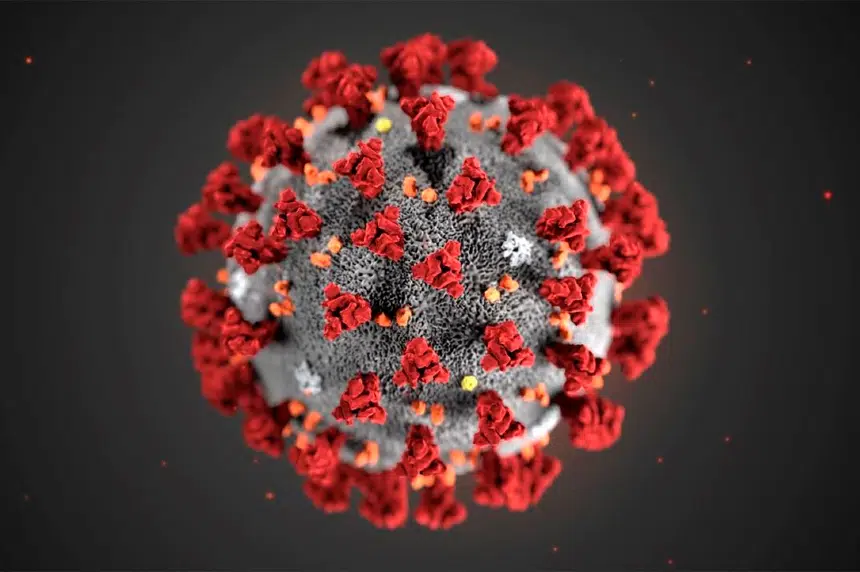Parents should be ready to get their kids between the ages of five and 11 vaccinated by November, Saskatchewan’s Chief Medical Health Officer said Wednesday.
Saskatchewan residents heard from the province Wednesday morning during a technical media briefing teleconference hosted by the Saskatchewan Public Safety Agency’s (SPSA) Emergency Operations Centre at 11 a.m.
The briefing was slated to”discuss current logistical information on the provincial response to the COVID-19 pandemic,” according to a news release.
Present on the call as it began was SPSA president Marlo Pritchard, Saskatchewan Health Authority (SHA) CEO Scott Livingstone and the province’s chief medical health officer Dr. Saqib Shahab. The teleconference is the first time in 13 days Shahab has spoken publicly.
Saskatchewan premier Scott Moe was not present on the call.
No patients yet sent out-of-province
Pritchard said a “significant” amount of planning went into a contingency plan for out-of-province patient transfers over the weekend.
Conversations between the SHA, Saskatchewan’s Ministry of Health and the province of Ontario facilitated the planning. No patients have yet been sent out of the province.
The province is currently trying to spread its support as widely as possible, Pritchard said, but has the plan in place in case Saskatchewan’s situation changes and patients need to be transferred out of Saskatchewan.
“We really appreciate the willingness of Ontario to engage with us in these discussions, but hopefully we will never have to use them.”
Livingstone said hospitals and their ICUs are working to build up capacity to ensure they’re “prepared for the worst.”
Major slowdowns across the province, redeployment of more than 160 staff members to ICUs and expanding the ICU by 150per cent are some of the ways the SHA and PEOC have worked to build hospital capacities in recent weeks, Livingstone shared. He said some patients are being moved out of larger centres into regional centres, too.
The province is still seeing unprecedented rates of hospitalization and ICU admissions, however.
“This is pushing the system to a place where we are not providing care to non-COVID patients across this province which we should be and hence the service slowdowns, which will continue.”
The trigger that pushes the province to send patients to Ontario for care will depend on the coming days. Recently the province saw a surge to 80 COVID-19 patients in ICUs in Saskatchewan, which decreased slightly Wednesday.
Some hospital capacity has been reserved for emergencies like a car accident on a long weekend or other trauma incidents, Livingstone said, but the bottom line is that ICUs in the province are extremely strained.
“At the end of the day, we are already over our capacity in ICU so any major events … we would be triaging patients and sending out of province,” Livingstone said.
When asked how many admissions the province is away from official triage, Livingstone said patients are being assessed for treatment in both ICUs and on regular hospital wards.
“These are acutely ill individuals who would typically see a higher level of acuity in care in the hospitals but are being treated on the ward by skilled staff,” he said.
He said if the province is pushed to send patients across borders for care, teams will assess patients for this possibility, as some patients may not be stable enough for transport and it will depend on what patients receiving jurisdictions are prepared to take.
Province receives 1.9 million rapid test kits
This week, Saskatchewan received nearly 2 million rapid test kits. The plan for these kits is to unload them and plan for distribution in the coming weeks.
The kits are anticipated to be made available sometime next week.
One million of the kits — nearly half — will be relegated to the SHA’s Test to Protect program, which will distribute kits to schools, long-term care facilities, personal care homes, correctional facilities, childhood care homes, health care workers and businesses registered with the SHA for their workplace surveillance program.
The remaining kits will be distributed to the public at fire stations, hotels, local chambers of commerce, SPSA regional bases and SHA testing centres.
“Additional kits are on order and will be added to this public distribution upon their arrival,” Pritchard said.
The province of Saskatchewan has asked the federal government for one million kits per month to maintain supply for the public.
Pritchard said the kits are not individually packaged but have been bundled in groups of five.
“If the past is any indication, we know that these kits will be claimed quickly and the demand may outpace the supply,” he said.
Further details on locations and timelines for the distribution of the testing kits are expected to be announced later this week.
Secure isolation site reopens, COVID enforcement implemented
Pritchard said retired police officers are also being contracted “based on their skills they bring to the table, such as investigation, report writing,” to be part of a COVID enforcement team.
He said this will help prevent the need for any further specialized training of individuals.
The secure isolation site is also being reestablished to ensure that people who need to self-isolate but are refusing to follow the directions of public health officers will. Pritchard said the legislative process will help ensure this happens, and detention orders may be issued to people who do not comply with isolation requirements.
Pritchard added the reintroduction of these sites is to help prevent the community spread of COVID-19 and said the site is also available for people who don’t have a safe and effective place to isolate.
Provincial Emergency Operations Centre update
“The Saskatchewan Public Safety Agency is making progress in enhancing the provincial emergency operations centre (PEOC),” Pritchard said in his opening comments.
The group is meant to be in unified command with Saskatchewan’s health ministry and the SHA.
Pritchard said that since last week when the group was announced, key positions have been filled within the Ministry of Health, the SHA and the SPSA; section chiefs have started to “plug into” the existing SHA emergency operations centre they’ve been coordinating “operational and logistics activities” in an effort to alleviate some of the overwhelming workloads the SHA and Ministry of Health are currently dealing with.
The PEOC is meant to act as one source of information that is streamlining various information it is receiving, which Pritchard said is “proven to speed up decision making.”
When asked how the measures the PEOC is taking are reducing hospitalizations and increasing vaccinations in the province, Pritchard said the coordination is important to help contain the spread when we have outbreaks.
Livingstone, however, said he didn’t see the creation of the PEOC as having “any real impact on that at this time, other than helping us bring in provincial resources and out-of-province resources to help support the response.”
More coordination between government ministries about implementing vaccine policies will be key to increasing immunization rates, Livingstone said, and noted that first doses have reached 84 per cent in recent weeks.
Contact tracing
Livingstone said SPSA resources have been helpful with contact tracing, which does have the potential to slow the spread of COVID, ensure quicker follow-up and minimize contacts.
“We are not doing contact tracing the same way we did in previous waves,” Livingstone said.
The SHA CEO said there are higher pressures on contact tracing during the fourth wave due to high community case numbers and large numbers of contacts. There have also been greater pressures in alerting schools to outbreaks and ensuring parents, staff and students are notified.
Contact tracing is currently still working to contain outbreaks in areas like long-term care homes and schools. Livingstone said more will be shared in the coming days with respect to contact tracing support.
COVID and schools
With outbreaks and cases in schoools being announced daily in the province, Shahab said about a third of cases in kids under the age of 11 have involved exposures in households that are unvaccinated. While children under the age of 11 cannot currently be vaccinated themselves, parents and siblings who are eligible for vaccination but have not been have contributed to spreading the virus.
Shahab urged families with kids or those connected to schools to get vaccinated to protect children and offered some hope to parents.
“We should all be ready to vaccinate our children, (ages) five to 11, November onward because we are looking forward to Health Canada approving and providing vaccines,” Shahab announced.







